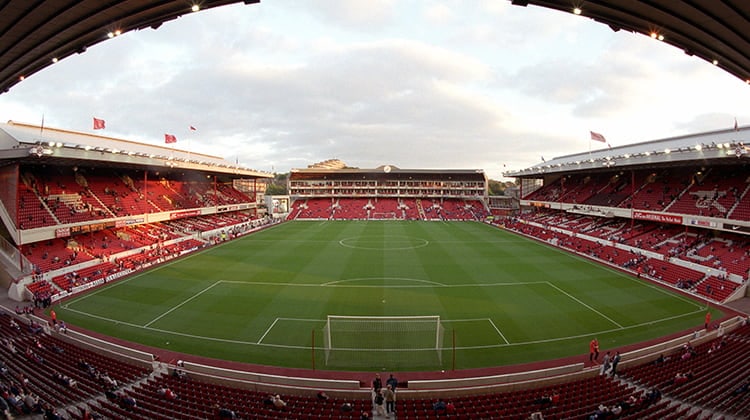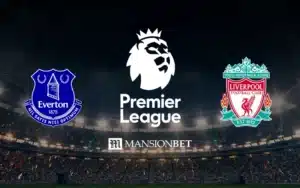As time has progressed, football stadiums have been modernised, renovated and in some cases, demolished.
Hundreds of years of history are ingrained into our stadiums, providing fond memories for many supporters down the years.
Although it is understandable why some clubs have decided to move to new stadiums, it does not stop the feeling of sorrow seeing history being turned into rubble.
Many Premier League teams, both current and former, have upped sticks and moved. But which are the 5 best former Premier League stadiums?
1. Highbury – Arsenal (1913 – 2006)

Originally built in 1913, Highbury quickly became known as the ‘Home of Football’ by many at Arsenal.
From the iconic clock to a Grade II listed East Stand, the ground was incredibly popular across the footballing world.
Highbury quickly became a fortress for Arsenal, including the famous ‘Invincibles’ of 2003-04 when the Gunners went 49 games unbeaten.
Due to its history and popularity, the owners of Arsenal at the time would have preferred to expand Highbury as opposed to moving to a new site. However, residential restrictions and the East Stand’s Grade II listing meant expansion was almost impossible.
In the late 1990’s, it was confirmed that Arsenal would be leaving Highbury.
Arsenal’s final Premier League game there saw the Gunners go out on a high, defeating Wigan 4-2 and securing Champions League qualification at the expense of local rivals Tottenham.
2. Maine Road – Manchester City (1923 – 2003)

East Manchester was always regarded as the home of Man City, so the move to Moss Side in South Manchester was a controversial one back in 1923.
However, City fans quickly fell in love with Maine Road and it currently holds the record for the highest club attendance in English football, 84,569.
The famous Kippax Stand originally began as terraces before becoming an all-seater following the Taylor Report.
The stand was once considered the tallest in the country and could hold up to 14,000 fans and there were plans to redevelop further, until they were cancelled following City’s relegation in 1996.
Following the abandonment of these plans, the club had favoured a move to a new stadium which would be built for the 2002 Commonwealth Games.
The City of Manchester Stadium saw City return to East Manchester which coincided well with the club’s future successes.
3. The Dell – Southampton (1898 – 2001)

For over a hundred years, The Dell was home to the Saints before their move to the St Mary’s Stadium in 2001.
Many aspects of the ground were iconic and well-known throughout Southampton, such as the ‘chocolate boxes’ before they were replaced by a new family stand in the 1980’s.
The stand, also known as the Milton Road Stand, was once again renovated in the 1990’s, giving it another new and unusual look.
Due to lack of space, the seats in the stand resembled an odd triangular shape, with the left side of the stand going just six seats up with the right side holding approximately five times this amount.
With ground improvements reducing the capacity, Southampton began looking for a new home.
Construction began in 1999 and the Saints marched on to the St Mary’s Stadium just two years later, with club legend Matt Le Tissier scoring the last goal at The Dell.
4. Burnden Park – Bolton Wanderers (1895 – 1997)

Another club occupying a ground for over a hundred years was Bolton, who enjoyed a long history at Burnden Park for 102 years.
One of the 12 founding members of the Football League, Bolton required a purpose ground for home matches, which saw fund raised for Burnden Park to be built.
An interesting piece of history of the ground involves artist L.S. Lowry, who painted Going To The Match, which included fans descending upon Burnden Park. The painting was bought by the PFA for £1.9million.
In the 1980’s, attendances were dramatically dropping due to performances on the pitch and a section of the ground was even sold off to make way for a supermarket.
Due to difficulties in upgrading Burnden Park to an all-seater, the club decided to move to the Reebok Stadium in 1997, with Burnden’s demolition finishing two years later.
5. Boleyn Ground – West Ham United (1904 – 2016)

Often referred to as Upton Park, due to its location, the Boleyn Ground was home to West Ham for 112 years.
Redevelopments began after WWII when part of the ground was damaged, and in the 1990’s when the South Bank was replaced by the newly-named Bobby Moore stand.
With the Olympic Stadium being built nearby in Stratford, West Ham became interested in making the move following the 2012 Summer Olympics.
In 2010, new owners David Gold and David Sullivan confirmed the move would go ahead, and West Ham left the Boleyn Ground in 2016 following a memorable 3-2 victory over Man Utd.
Four years on, the Boleyn Ground is now host to a housing development, however the World Cup Sculpture remains in its place.






